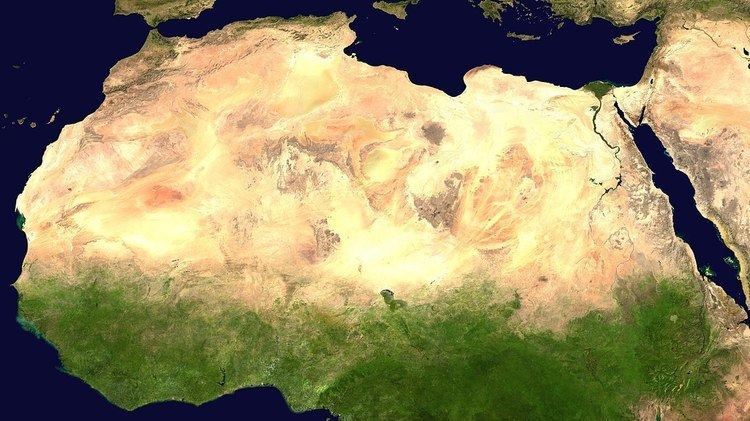 | ||
The 5.9 kiloyear event was one of the most intense aridification events during the Holocene Epoch. It occurred around 3900 BC (5900 years Before Present) and ended the Neolithic Subpluvial and probably initiating the most recent desiccation of the Sahara, as well a five century period of colder climate in more northerly latitudes.
Contents
It also triggered human migration to river valleys, such as from central North Africa to the Nile, which eventually led to the emergence of the first complex, highly organized, state-level societies in the 4th millennium BC. It is associated with the last round of the Sahara pump theory.
Cause
A model by Claussen et al. (1999) suggested rapid desertification, associated with vegetation-atmosphere interactions following a cooling event, Bond event 4. Bond et al. (1997) identified a North Atlantic cooling episode 5900 years ago from ice-rafted debris as well as other such now called Bond events, which indicate the existence of a quasiperiodic cycle of Atlantic cooling events approximately every 1470 years ± 500 years. For some reason, all the earlier arid events (including the 8.2 kiloyear event) were followed by recovery, as is attested by the wealth of evidence of humid conditions in the Sahara between 10,000 and 6,000 BP. However, it appears that the 5.9 kiloyear event was followed by a partial recovery at best, with accelerated desiccation in the millennium that followed.
For example, Cremaschi (1998) describes evidence of rapid aridification in Tadrart Acacus of southwestern Libya, in the form of increased aeolian erosion, sand incursions and the collapse of the roofs of rock shelters. The 5.9 kiloyear event was also recorded as a cold event in the Erhai Lake (China) sediments.
Effects
In the eastern Arabian Peninsula, the 5.9 kiloyear event may have contributed to an increase in relatively greater social complexity and have corresponded to an end of the local Ubaid period.
Also, by causing a period of cooling in Europe, it may have contributed to the decline of Old Europe and the first Indo-European migrations into the Balkans from the Pontic-Caspian Steppe, according to the book The Horse, the Wheel, and Language, by David W. Anthony.
